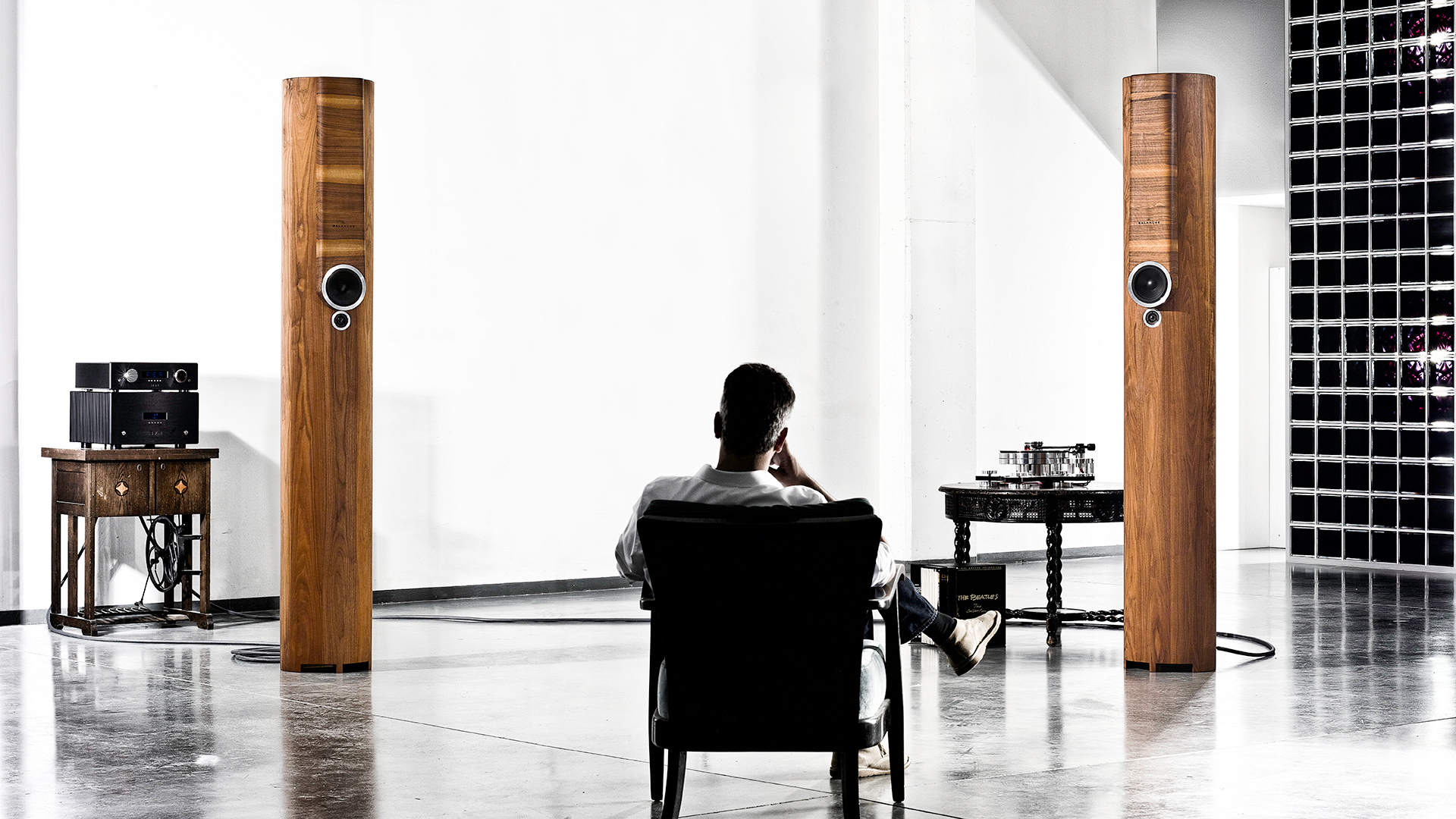Conductor cues in piano and harps, which start at the left with happy delicate notes – harps in the forground, piano a little behind. Cellos at the right joins the cheerful melody line by violas and clarinets from the right center while snare drum beats driving rhythm for the symphony. Imaginary stage with stereo imaging is in balance. Deepest melodies from cellos and basses combined with the instruments of the lower wind sections are impressively pleasant because of the clear and vibrant low frequency performance.
Imaginary stage

Sound characteristics of percussion instruments
Percussion instruments
In every percussion instrument, including timpani, bass drum, a snare drum or a drum set, the sound characteristics are explosive. Player’s attack to head creates one quick airmass movement as a wave which is clearly hearable. It rapidly develops into much more calm, flat and fading sound. The decay times of percussion instruments are short – except decay times of timpani and bass drum can be a little longer.
Snare drum
Bright, hard, clear, precise, metallic, shrill, noise-like, sharp, penetrating, rustling, hissing, shuffling, rattling, clattering, dry, cracking.
The task of the snare drum is mostly rhythmic. It can be played quietly with a light touch or loudly with creating a penetrating sound, therefore it can always be heard and is also able to lead the whole orchestra. The attack to head of a snare drum creates only a very short tone. The sound after that comes from vibration of the strings on the lower head of the drum. Snare drum can also create explosive sound with quick fading.
Timpani
Dull, thunderous, booming, deep, heavy, powerful, mellow, velvety, substantial, resonant, round, rumbling, dry, hollow.
Timpani is a strong and audible instrument as to why it needs to be carefully planned and delicately balanced with instruments playing among (e.g. doubling bass notes ). Timpani’s role in a performance may not be underestimated. Timpani are tunable, even when the rest of the orchestra is still playing. They are mainly arranged in pairs within four groups of range. Modern timpani are equipped with pedals for tuning and slide effects.
Timbre of timpani depends on the material of the mallets, strike point of the head and the used power of the stroke.
Lighter mallet materials create higher harmonics and the sound will be brighter where as heavier mallet harmonics are deeper and timbre becomes darkly powerful.
After the attack creates explosion effect, the resonance and vibrance will last 3-4 seconds in smaller timpani and 4-5 seconds in larger timpani until sound has faded away.
Sound characteristics of woodwinds and strings
Concert flute
Airy, light, poetic, mellow, bright, wafting, ethereal, rich, soft, graceful, penetrating, brilliant, clear, shrill, silvery, wind-like, whistling, whispering, humming, filigree, sighing, aspirate.
The flute offers a wide range of timbres according the register where it is used. Registers next to each other sound unified.
Lower registers sound dark, intimate and wafting. and need to be well balanced with other instruments to avoid drowning..
Middle registers sound brightful, sometimes wind-like.
Upper registers are light, airy, whistling and brilliant and blend well with other woodwinds, brass and strings.
All registers are frequently used for solo work.
Piano
Mellow, clear, brilliant, warm, full, lyrical, open, gentle, sweet, dark, thick, heavy, powerful, singing.
Sound range of piano is one of widest of all musical instruments and it can sound very melancholic for a moment, and brilliantly rich or powerful percussive in the other.
That is why piano has multiple variations in use, from solo pieces to infront of orchestra .
Long story short, the Italian harpsichord maker who invented Piano, named it as a gravicembalo col piano e forte, which means harpsichord with soft and loud – shortly pianoforte or even a shorter as piano.
The sound of piano comes from hammers striking tuned strings. When pianist presses key lightly with a small force, it creates sounds of soft dynamic levels, musicians call it piano. If pianist presses key with high power force, it creates sounds of high dynamic levels, musicians call that as forte. Also three pedals gives an opportunity to pianist have more control to the sound. Left pedal makes created sounds softer and is called as soft pedal. The one in the center is sustain, which releases dampers so sound can be heard longer. The pedal on the right is used to damper a whole keyboard. In some records it is fascinating to hear pianist foot working on pedals too.
Cello
Vibrant, clear, bright, mellow, warm, sonorous, full, brilliant, singing, lustrous, stately, lyrical, cantabile, weighty, powerful, silky, lively, incisive, eloquent, transcendental, supernatural, sensuous, calm, round, pure, muffled, dark, open, sustaining, solemn, wafting, gentle, sweet, veiled.
The cello is a mellow string instrument. Its personality is often compared to the male voice of the string section. Transitions between registers are smooth. Lower notes have powerful and grandiloquent smooth vibrant sound of bass, upper notes comes more alive, creating joyful silky and warm sounds.
Clarinet
Rich, mellow, warm, gentle, melodic, vocal, round, lustrous, brilliant, bright, throaty, penetrating, dark, menacing, dramatic, incisive, expressive, shrill, reedy, caressing, pale, lively.
The clarinet’s ability to play smooth and expressive legato lines make it an ideal instrument for a performance of evocative cantilenas.

